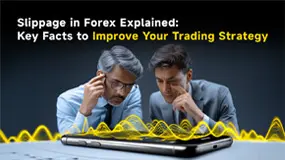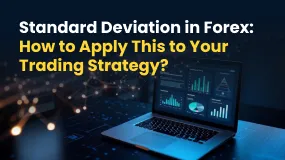简体中文
繁體中文
English
Pусский
日本語
ภาษาไทย
Tiếng Việt
Bahasa Indonesia
Español
हिन्दी
Filippiiniläinen
Français
Deutsch
Português
Türkçe
한국어
العربية
How to Become a Trader in Europe
Abstract:Becoming a trader in Europe offers an exciting opportunity to participate in the dynamic world of financial markets. Whether you aspire to trade stocks, commodities, or forex, here are some steps to guide you on your journey to becoming a trader in Europe.

Becoming a trader in Europe offers an exciting opportunity to participate in the dynamic world of financial markets. Whether you aspire to trade stocks, commodities, or forex, here are some steps to guide you on your journey to becoming a trader in Europe.
Educate Yourself: Start by gaining a solid understanding of financial markets and trading concepts. Familiarize yourself with basic terminology, technical and fundamental analysis, risk management, and trading psychology. Online resources, courses, and educational platforms like WikiFX can provide valuable insights.
Choose Your Market: Decide which financial market you want to trade. Europe offers a diverse range of markets, including stocks, commodities, and forex. Consider your interests, risk tolerance, and the time you can dedicate to trading.
Select a Trading Style: Determine your preferred trading style. Are you more inclined towards day trading, swing trading, or long-term investing? Each style requires different skills and strategies. Experiment with different approaches to find the one that suits you best.
Find a Broker: Research and choose a reputable broker that aligns with your trading needs. Look for brokers regulated by reputable authorities such as the FCA or CySEC. Platforms like WikiFX can help you find reliable brokers in Europe.
Develop a Trading Plan: Create a trading plan that outlines your goals, risk tolerance, entry/exit strategies, and money management rules. A well-defined plan helps you stay disciplined and focused amidst market fluctuations.
Practice with Demo Accounts: Before trading with real money, practice using demo accounts offered by brokers. This allows you to test your strategies and gain confidence without risking your capital.
Start Small: Begin with a small trading capital and gradually increase your exposure as you gain experience and confidence. Remember that trading involves risks, and it is crucial to manage your capital wisely.
Learn from Mistakes: Expect to make mistakes along the way. Treat each trade as a learning opportunity and analyze your successes and failures. Continuous learning and adaptation are key to improving as a trader.
Stay Informed: Keep yourself updated with market news, economic indicators, and geopolitical events that can impact the markets. Platforms like WikiFX provide reliable news and analysis to help you make informed trading decisions.
Manage Emotions: Trading can be emotionally challenging. Learn to control your emotions and avoid impulsive decisions. Embrace discipline and stick to your trading plan.
Remember, becoming a successful trader takes time, dedication, and continuous learning. Utilize the resources available, like WikiFX, to enhance your trading journey in Europe.

Disclaimer:
The views in this article only represent the author's personal views, and do not constitute investment advice on this platform. This platform does not guarantee the accuracy, completeness and timeliness of the information in the article, and will not be liable for any loss caused by the use of or reliance on the information in the article.
Read more

A Guide to Determining the Optimum Forex Leverage
Want to gain a wider forex market position control by investing a minimal amount? Consider using leverage in forex. It implies using borrowed funds to raise your trading position more than your cash balance can let you do it. Forex traders usually employ leverage to churn out profits from relatively small currency pair price changes. However, there is a double-edged sword with leverage since it can multiply profits as well as losses. Therefore, using leverage in the right amount is key for traders. Forex market leverage can be 50:1 to 100:1 or more, which remains significantly greater than the 2: leverage usually offered in equities and 15:1 leverage in futures.

Slippage in Forex Explained: Key Facts to Improve Your Trading Strategy
Have you witnessed a difference between the expected price of a trade and the price at which it is executed in real time? This might be due to slippage, which can happen at any time. However, it prevails mostly when the market remains highly volatile. At the same time, it can also happen during large order executions. Read on to know more about slippage, its impacts, and the strategies to rein in adverse effects.

Forex Trading Account Types and Their Features: Read This Insightful Guide
Want to open a forex account to enjoy the thrill of compounding returns? You should first know the various forex trading account types. Choosing the right option from the list of forex accounts is critical to experiencing a hassle-free and successful trading journey. Forex brokers design trading accounts based on your needs, trading experience, and financial goals. Therefore, understanding each forex trading account type and its key features becomes essential.. This will help you make the right choice. In this article, we have discussed everything about forex accounts. Take a look!

Standard Deviation in Forex: How to Apply This to Your Trading Strategy?
Do you recall the concept of standard deviation being taught in your school days? The concept, which measures the variation within a set of data points relative to the mean average of the dataset. A greater standard deviation hints at higher variability. On the other hand, a lower standard deviation means lower variability from the mean. But what is standard deviation in forex, and how can you apply it to your trading strategy? This is what we will discuss here.
WikiFX Broker
Latest News
Stonefort Broker Review 2025: Legit or Risky? A Complete Analysis
Quantower Review 2025: User Reviews and Complaints in India
Uniglobe Markets Review 2025: A Safe Broker or a High-Risk Scam?
CHINA BEST Broker Review: Regulation and Risks
TD Markets Exposed: Price Manipulation, Withdrawal Issues & False Promises Hurt Traders
Bank of England holds rates steady in narrow vote ahead of Autumn Budget
BingX Review: Traders Angry Over Withdrawal Denials, Account Blocks & More
Op-ed: The fuel for the AI boom driving the markets is advertising. It is also an existential risk.
Private payrolls rose 42,000 in October, more than expected and countering labor market fears, ADP says
He Thought It Was a Crypto Investment; It Cost Him RM1.2 Million
Currency Calculator




